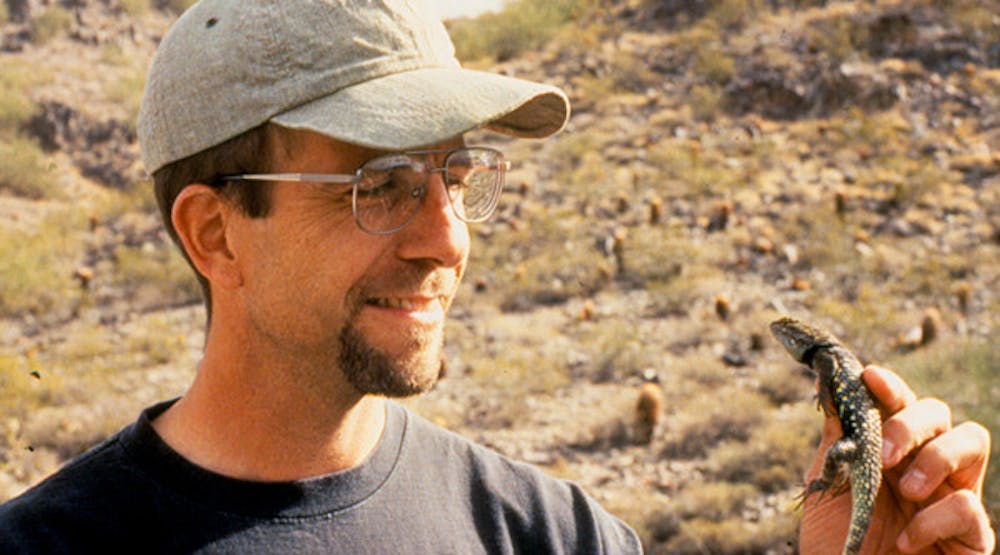Frog toes are not only useful for frogs, but also for research, at least for one ASU biologist.
Brian Sullivan, a professor in the West campus’s Mathematical and Natural Sciences Division in the New College of Interdisciplinary Arts and Sciences, studies two species of toads and their interactions.
He studies these interactions by collecting data and DNA samples, which come from toad toe clippings.
He said he can use the clippings to tell the toads apart, since it is not always easy to tell hybrids (or mixed species) apart. It’s also an advantage to keep the toads alive so he can study interactions over time.
“It’s very useful for being able to follow them around,” Sullivan said.
The importance of studying the toads’ interactions is to find out how human activity is altering the toads’ habitats and causing hybridization.
“Studying hybridization can help us understand species’ boundaries,” Sullivan said.
He said the nature of the species and how it came to be are important information to know for evolutionary understanding.
“Hybridization gives you insight to both of those things,” Sullivan said.
Besides using toe clippings, he also records other characteristics of the toads, including physical appearance, among other aspects.
“Another very important clue is that I would record the calls of the males,” Sullivan said. “The calls are dramatically different between these two types of toads.”
The toads in question are the Arizona toad and the Woodhouse’s toad, and Sullivan has studied them since 1984.
“The Arizona toad, which is basically just found in Arizona, has been considered by the Arizona Game and Fish Department to be a sensitive species,” Sullivan said.
This is most likely an effect of hybridization, he said.
“Hybridization isn’t necessarily the cause of the decline [in Arizona toads], but it accelerates it,” he said.
Sullivan added that hybridization is “associated with one or the other species having an advantage over the other.”
Due to human activity, such as building dams, the Woodhouse’s toad seems to have an advantage over the Arizona toad.
“Woodhouse toads might do better when humans put a dam up than Arizona toads,” he said.
The areas in which these toads are found to interact are Agua Fria River, Lake Pleasant, Prescott Valley, Sun City and Central Arizona in general, Sullivan said.
Terry Schwaner, dean of the College of Sciences at the University of Findlay, in Ohio, helped Sullivan with his research.
“I was working on the same species of frog, except in Utah, not Arizona,” Schwaner said.
The toad he works on is the Arizona toad.
He said he created an undergraduate research program while he was at Southern Utah University and allowed the students to help with researching the toads.
“We’re teaching students through the work that we’re doing,” Schwaner said.
He said that in Utah there were a plenitude of the toads for students to observe.
“It’s best to work with organisms that are abundant,” Schwaner said.
Jessica Wooten, who will be an associate professor at the University of Findlay, specializing in evolutionary biology and previously working at Franklin University, also helps with Sullivan’s research.
“I’m really interested in looking at the genetic diversity of these toads,” Wooten said.
She said she started helping early in the summer.
“We’re just starting the genetics work,” Wooten said.
She said that she believes the research is important from a conservation standpoint and for other reasons.
“This particular research is important because the Arizona toad, by itself, doesn’t hybridize with the Woodhouse’s toad as long as it’s in areas of non-disturbance,” Wooten said.
Reach the reporter at reweaver@asu.edu




